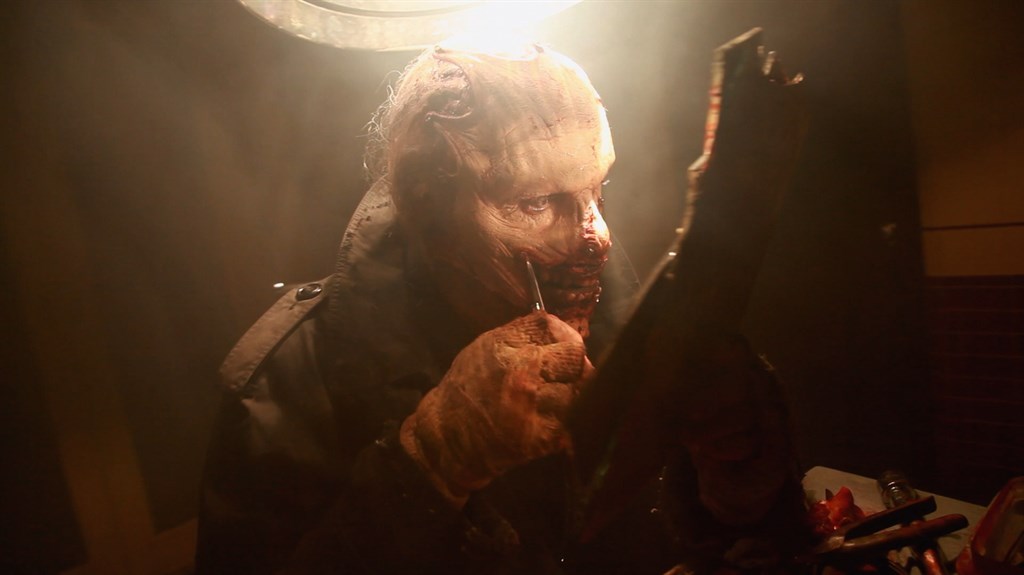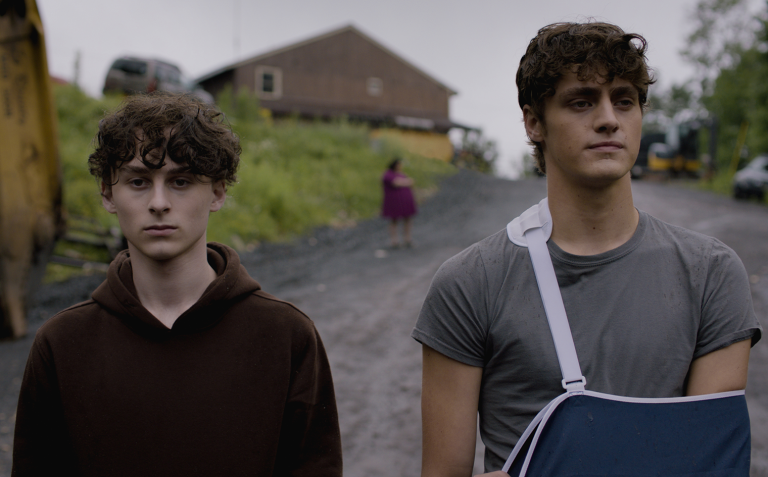Directed by Tobe Hooper, Toolbox Murders (2004) begins as a gritty urban crime tale before twisting into something far more uncanny—a claustrophobic spiral of isolation, obsession, and the creeping suspicion that you are trapped inside something sentient. At its core are Nell and Steven Barrows, a couple whose frayed marriage and emotional estrangement leave them exposed to the malignant presence lurking within their new home, the Lusman Arms. As its macabre history comes to light, the narrative shifts from a fight for survival to a more disquieting riddle: how much of the terror is the work of the killer, and how much belongs to the building itself?
Spoilers Ahead
Toolbox Murders (2004) Plot Summary & Movie Synopsis:
How Did Nell End Up in the Lusman Arms Nightmare?
When Nell and Steven move into the Lusman Arms, it’s not for the charm; it’s for affordability and location. Steven’s medical internship devours his time and attention. From the start, his emotional availability is almost nonexistent. This leaves Nell, naturally curious and socially open, adrift and looking for connection.
She finds it in Julia, a lively neighbor, and Chas Rooker, an older resident whose cryptic stories about the building are laced with the energy of someone who’s seen too much and been ignored for too long. The building manager, Byron, plays tour guide, but with a defensive detachment. His attitude signals that the Lusman Arms has its share of “don’t ask, don’t tell” problems.
Psychologically, this environment primes Nell for danger. She’s under-stimulated, emotionally abandoned, and surrounded by strangers whose eccentricities make them seem suspicious or unreliable. She begins to notice small details that others dismiss, which pushes her into the role of “the one who sees what’s really going on.” Meanwhile, isolated tenants are being picked off. Daisy Rain is murdered with a hammer. Her death reflects the killer’s direct, almost industrial brutality — no finesse, just a blunt act of removal. Julia and another resident soon meet similar fates, their disappearances unnoticed because the building already feels transient and impersonal.
Why Are Tenants Disappearing?
When Julia vanishes, Nell’s suspicion isn’t just curiosity; it’s also personal. Julia was her only friend in the building, and losing her intensifies Nell’s loneliness into a kind of obsession. This is a turning point: instead of seeking safety, Nell begins to seek the truth, even if it means putting herself in harm’s way. Her discovery of a trinket filled with human teeth is the first tactile evidence that the danger is real.
Chas, whose paranoia comes from lived experience rather than imagination, feeds her obsession by giving her a note, “Look for her in Room 504.” But there is no Room 504. This revelation is psychologically destabilizing: Nell realizes the building’s layout hides something deliberate. Missing “4” apartments on every floor suggests not just architectural trickery but purposeful secrecy, as if the building itself has amputated parts of itself from public view.
Her trip to the Los Angeles Preservation Society confirms her fears. Learning that Jack Lusman was an occultist shifts the threat from a simple human killer to something rooted in ritual and design. The runes decorating the building, which Nell impulsively copies onto her skin, become both a symbolic and psychological shield. By drawing them, she begins to mentally align herself against the building’s influence, as though she can counteract the “spell” by embodying its opposite.
What’s Inside the Hidden Townhouse?
Nell’s search leads her to the roof, where she finds the hatch into the hidden townhouse. The space is surreal, part Hollywood shrine, part torture complex. The juxtaposition suggests a psychological truth: the Lusman Arms is both seductive and sadistic, luring people with beauty before consuming them. When she finally meets the killer, the mask comes off, revealing Coffin Baby, a malformed, monstrous figure. Seeing him confirms her worst fear: this isn’t just a man with a grudge; it’s something born for violence, shaped by forces outside normal human morality.
What Is Coffin Baby, and Why Is He Killing?
Chas later hints at Coffin Baby’s origin, clawing his way out of his dead mother’s womb. This grotesque birth imagery ties him to the building’s life cycle: he’s a living byproduct of death. Nell theorizes that the building itself needs death to persist, making Coffin Baby less an independent killer and more a caretaker of the Lusman Arms’ unnatural existence. From a psychological standpoint, Coffin Baby operates without moral choice. His killings are maintenance, not malicious. This makes him more terrifying because there’s no bargaining with him, only the inevitability of a predator fulfilling its role.
How Do Steven and the Others Get Involved?
A teenage tenant’s voyeurism becomes an accidental act of witness when his webcam captures Julia’s murder. The guilt and horror push him to show Steven, whose reaction is more clinical than panicked, typical of someone trained in medicine to compartmentalize trauma. Finding Nell’s notes breaks Steven’s emotional detachment. His transition from absentee partner to active rescuer is sudden but rooted in fear of losing her permanently. He joins the boy, Byron, and the doorman to search Coffin Baby’s domain, but this group isn’t united by trust. Byron and the doorman enter the search with resignation rather than bravery, which might explain their quick deaths.
How Does Nell Defeat Coffin Baby?
After Coffin Baby kills Chas and captures Nell, Steven’s rescue is brutal and desperate, more survival instinct than heroism. His bludgeoning attack on Coffin Baby is raw, lacking finesse, showing how close he is to breaking himself. When Coffin Baby reappears in Nell’s apartment, her earlier decision to draw the runes on her arms pays off.
Whether the symbols truly disorient him or just give Nell the psychological confidence to fight back, they buy her enough time for the police to intervene. Wrapping the cord around his neck is both practical and symbolic; she’s literally binding the predator with a tool of restraint. The final moment, Coffin Baby’s body disappearing yet again, confirms Nell’s unspoken dread: she may have survived, but the building’s hunger hasn’t been sated.
Toolbox Murders (2004) Movie Ending Explained:
Is Coffin Baby Dead?
The ending suggests that Coffin Baby can’t be “killed” because he’s less a man than a living function of the building. Destroying him would mean severing the building’s power source, and the Lusman Arms is too entrenched to collapse from one failed hunt.
Psychologically, the survivors each embody a different aftermath:
- Nell is hyper-aware, having transformed from a passive resident into someone who knows she’s living in a predator’s den.
- Steven carries guilt for not protecting her sooner, which may drive him to become more controlling in the future.
- The police represent society’s inability to process supernatural threats; they see only the visible enemy, not the system producing him.
More than anything, “Toolbox Murders” shows how a place can become a psychological trap: a home that erodes trust, isolates residents, and rewards those who ignore the strange until it’s too late. The killer may wear the mask, but the building itself is the true face of the horror.








